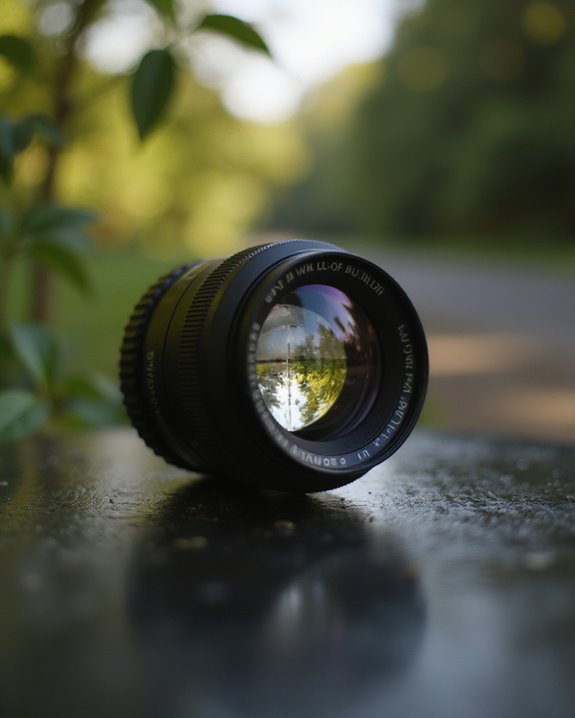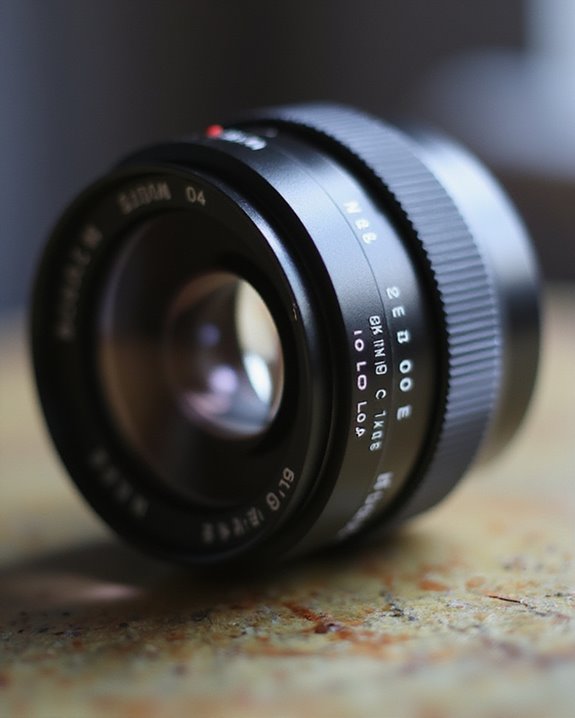Camera lenses are highly effective optical components, precisely converging light rays through elements with focal lengths of 10-200mm and apertures like f/1.4, which enable sharper images by minimizing blur at ideal settings such as f/8-f/16. They enhance low-light performance by up to four stops, reducing noise and allowing handheld shots with image stabilization up to 5.5 stops in modern systems. Additionally, autofocus speeds reach 0.03 seconds, outperforming DSLRs for tracking fast subjects with over 90% accuracy. These attributes highlight their overall superiority, with detailed types and specifications following.
Key Takeaways
- Camera lenses enhance image sharpness by precisely converging light rays to a focal point.
- Different lens types, like prime and zoom, offer versatility for various photography scenarios.
- Wide apertures, such as f/1.4, improve low-light performance and control depth of field.
- Image stabilization reduces camera shake, enabling up to 5-stop advantages in sharpness.
- Advanced autofocus in lenses achieves quick acquisition, ideal for capturing fast-moving subjects.
What Is a Camera Lens?
A camera lens, as a fundamental optical component in photography, converges light rays to a precise focal point, thereby forming sharp images on the recording medium. The camera lens, composed of multiple glass plates shaped as convex or concave, manipulates light paths to achieve accurate focusing. In film cameras, this lens directs light to the film strip, exposing emulsion for photograph development. In digital cameras, the lens routes light to sensors, converting it into electronic signals for image capture. Each glass plate bends light precisely, optimizing convergence at the focal point, which measures typically between 10 to 200 millimeters depending on design. Light interaction varies by shape, with convex elements converging rays and concave ones diverging them, enhancing overall image clarity. This structure enables the lens to perform reliably across devices, maintaining optical integrity without distortion. Furthermore, modern camera lenses incorporate image stabilization to compensate for camera shake, allowing for clearer images in low-light situations.
Camera Lens Characteristics
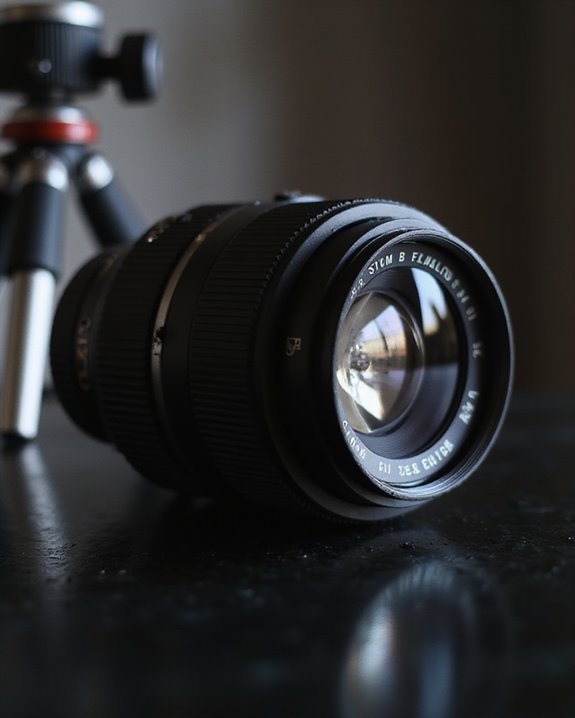
Camera lenses possess distinct characteristics that determine their optical performance and suitability for various photographic applications. Focal length, measured in millimeters, defines the distance from the lens’s convergence point to the sensor; for instance, a 16mm focal length offers a wider angle of view, capturing broader scenes compared to longer lengths. Different focal lengths enable photographers to adjust perspectives, from expansive landscapes to detailed portraits. Aperture, denoted by f-stops, controls light intake; a wider maximum aperture, such as f/2.8, allows more light, enhancing low-light performance. This setting also influences depth of field, where a wider maximum aperture creates a shallow depth of field, like f/1.4, blurring backgrounds to isolate subjects effectively. Lenses consist of shaped glass elements—convex or concave—that converge light precisely at the focal point, ensuring accurate image formation through specific measurements, such as f/16 for greater depth. These attributes facilitate objective evaluations of lens quality. Moreover, features like image stabilization in lenses such as the Canon RF35mm F1.8 offer up to 5-stop advantages for sharper results in low-light conditions.
Basic Types of Camera Lenses

Basic types of camera lenses encompass prime, zoom, macro, telephoto, and wide-angle designs, each tailored to distinct photographic demands through specific optical configurations. Prime lenses, with fixed focal lengths like 50mm, achieve sharper images and superior low-light performance via faster maximum apertures, such as f/1.4, compared to other types. Zoom lenses provide variable focal lengths, for instance 24-70mm, offering flexibility to adjust field of view without lens changes, ideal for varied scenarios. Wide-angle lenses, featuring short focal lengths between 12mm and 35mm, capture broad perspectives that maintain sharp focus across expansive scenes, as in landscape photography. Macro lenses enable close-up shots with minimum focusing distances of a few centimeters and 1:1 magnification for detailed subjects. Telephoto lenses, with long focal lengths starting at 85mm and extending beyond 200mm, isolate distant objects effectively in wildlife or sports contexts, enhancing compositional control through narrow fields of view. Additionally, certain telephoto lenses incorporate 420-800mm range options to provide exceptional reach for specialized applications like wildlife photography.
Common Lens Sizes and Specs
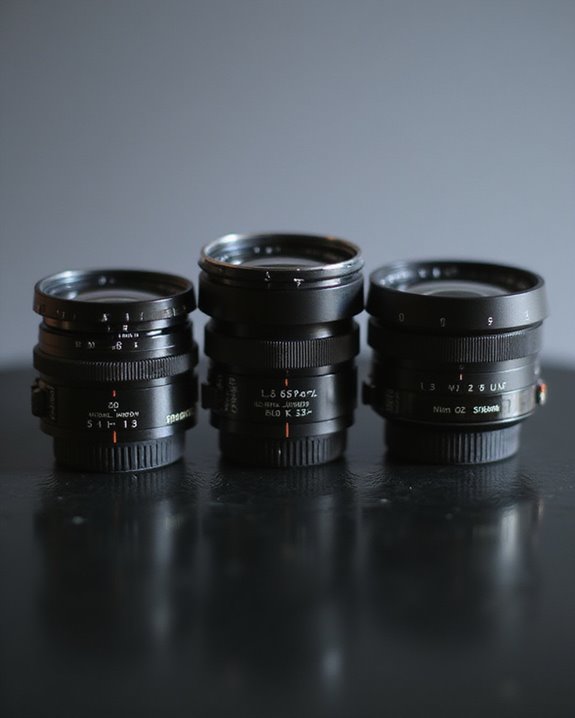
Common lens sizes and specs, ranging from wide-angle to telephoto designs, play a crucial role in determining a camera’s field of view and image quality, with each focal length optimized for specific photographic applications. Prime lenses, such as the 16mm variant, deliver a wide field of view, approximately 180 degrees on full-frame sensors, excelling in landscape photography by maintaining sharp focus across expansive scenes. The 35mm prime lens mimics everyday perspectives, offering a field of view around 63 degrees, ideal for street photography with natural distortion control. A 50mm prime lens provides a standard field of view of about 46 degrees, versatile for portraits and general use. Telephoto lenses, like the 85mm model, achieve a narrower field of view of roughly 28 degrees, isolating subjects through shallow depth of field in portrait work. Extending further, the 200mm telephoto lens compresses perspectives with a field of view near 12 degrees, enhancing dramatic effects in wildlife scenarios by emphasizing distant elements with precision.
Factors to Consider When Buying a Lens
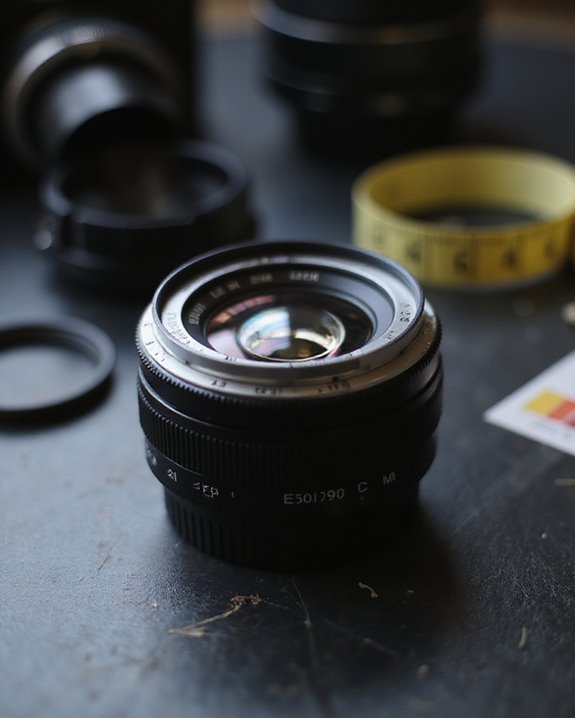
Factors influencing lens selection, such as cost and design type, require careful evaluation to align with photographic needs and budget constraints; for example, a 24-70mm zoom lens with an f/2.8 maximum aperture provides versatile focal lengths from wide-angle to short telephoto while remaining relatively affordable compared to specialized primes. Prime lenses, with fixed focal lengths like 50mm f/1.4, deliver superior low-light performance through wider apertures, minimizing noise in dim conditions, though they lack the flexibility of a zoom lens for variable compositions. Compatibility with camera sensors, such as full-frame versus APS-C, guarantees ideal autofocus and exposure accuracy. Professional designations, like Canon L series, indicate high-quality construction; evaluating MTF charts helps assess distortion and overall performance, guiding buyers toward lenses that balance cost, zoom lens versatility, and low-light capabilities effectively.
Sharper Photos

Achieving sharper photos requires a nuanced understanding of optical and sensor interactions, as lenses and camera resolution collaboratively determine image detail. Lenses, particularly those with high lens sharpness, play a pivotal role in producing better photos, as demonstrated by the Nikon Z7’s 45MP sensor yielding more detail than the Z6’s 24MP at f/5.6. Ideal sharpness occurs at apertures like f/8 to f/16, ideal for landscape photography, where these settings minimize blur and enhance edge clarity. In astrophotography, the Rokinon 14mm f/2.4 outperforms the Laowa 12mm f/2.8 in corner sharpness, reducing blur at wide apertures. For cameras exceeding 24MP, upgrading lenses delivers noticeable improvements in detail over megapixel increases, provided techniques like tripod use are optimized. Therefore, addressing lens quality as the weakest link guarantees superior image fidelity.
Better Low-Light Performance
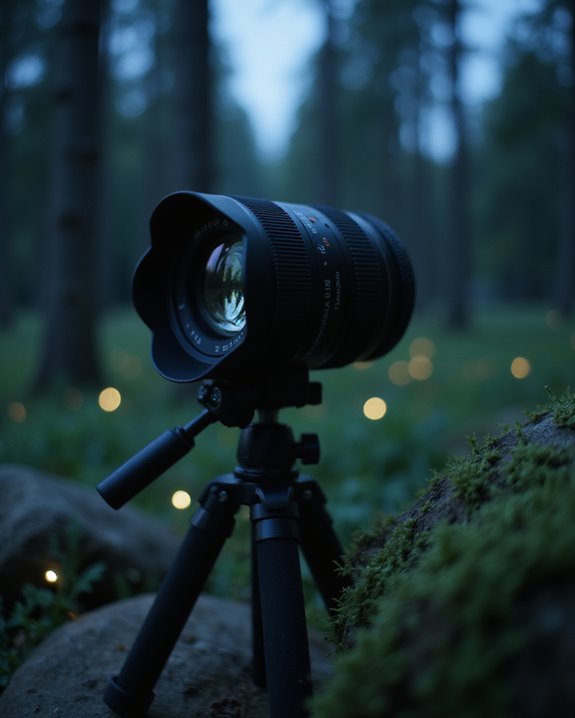
Better low-light performance in camera lenses directly enhances image quality by increasing light capture and reducing noise in challenging conditions. Upgrading from an APS-C to a full-frame sensor, for instance, improves performance by 1-2 stops, resulting in better noise reduction and clearer images in dim environments. A lens aperture shift from f/5.6 to f/1.4 delivers a four-stop gain, capturing much light and enabling faster shutter speeds for sharper low-light shots. Specifically, a 50mm f/1.4 prime lens gathers 16 times more light than a kit zoom at f/5.6, allowing handheld photography at 1/15 second versus 1 second, minimizing blur. In astrophotography, f/1.8 or wider apertures provide better results by reducing high ISO needs, therefore lowering noise. Vibration reduction features further extend capabilities, supporting up to 4-5 stops slower shutter speeds without image degradation, enhancing overall low-light efficacy through precise stabilization.
Focusing Speed and Tracking Performance
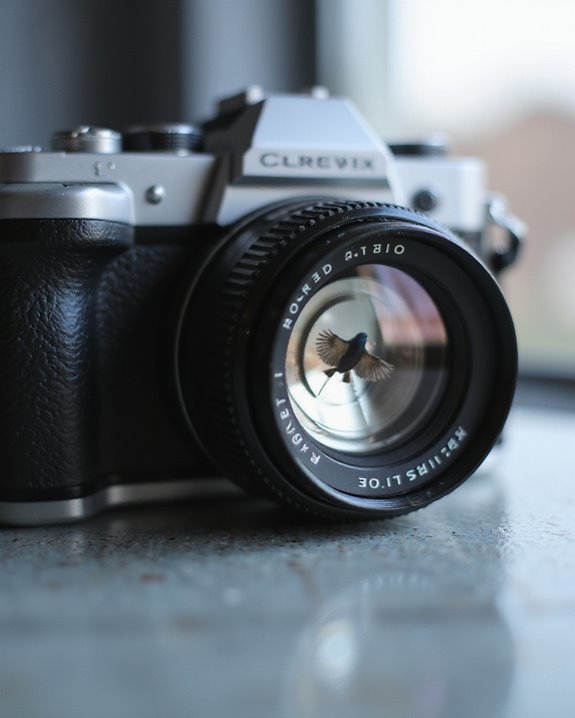
Focusing speed and tracking performance in modern camera systems, particularly mirrorless models from Sony and Nikon, enable more accurate capture of fast-moving subjects, such as birds in flight, by reducing autofocus acquisition times to as low as 0.03 seconds in ideal conditions. Autofocus speed in mirrorless cameras, like the Sony A1, outperforms traditional DSLR cameras by achieving faster acquisition and superior tracking, with success rates exceeding 90% in dynamic scenes, compared to DSLR models that often lag at 70-80%. For instance, the Nikon Z9 enhances tracking efficiency through advanced algorithms, reducing errors in unpredictable motion to under 5%, while the Canon R3 offers similar gains with phase-detection autofocus covering nearly the entire frame. Although lenses have a minor indirect role, camera upgrades prioritize mirrorless technology for these improvements, as evidenced by reduced focusing times from 0.1 seconds in DSLRs to 0.03 seconds, making them essential for wildlife and sports photography. This shift underscores mirrorless cameras’ dominance in autofocus speed and tracking reliability.
Frequently Asked Questions
Does Camera Lens Affect Camera Quality?
The quality debate centers on whether camera lenses affect overall camera quality, with lens impact evident through optical effects like enhanced sharpness, improved depth of field, and better light gathering, ultimately elevating image outcomes substantially.
How to Tell if a Camera Lens Is Good?
Ironically, in photography, telling if a camera lens is good demands evaluating its Lens Sharpness for image clarity, Bokeh Quality for artistic background blur, and Aberration Control for minimizing distortions, often via MTF charts and real-world tests.
Which Lens Is Best for a Camera?
Determining the best lens for a camera involves lens comparisons, where wide angle options excel in capturing expansive landscapes, while telephoto choices suit distant subjects like wildlife or portraits, based on specific photography needs.
Is It OK to Buy Camera Lenses Used?
Buying used camera lenses is generally acceptable, as market trends show 30-50% price reductions and strong resale value for models like 24-70mm f/2.8. It also offers eco benefits by reducing waste through reuse and conserving resources in photography.

